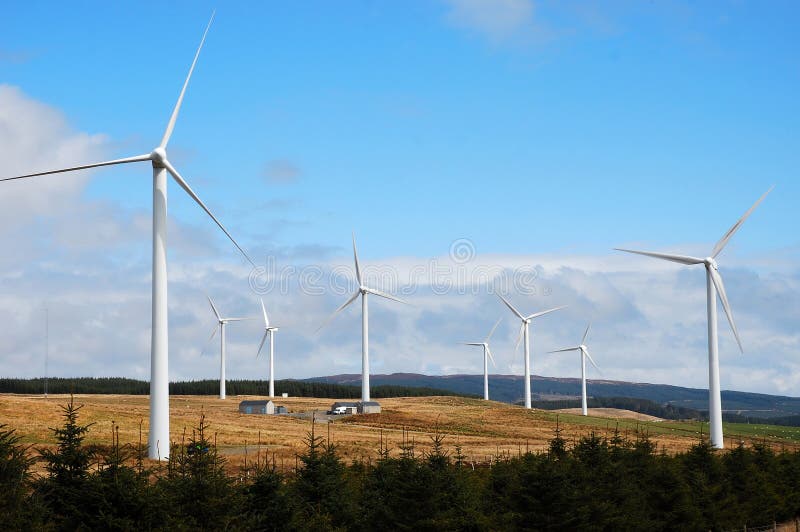
Introduction
The EurObserv’ER organisation publishes data annually on all types of EU28 Renewable installations and their productivity. EurObser’ER is backed by the EU and promotes the transition to Renewables. Their report for Solar power in 2019 here is a typical example of their annual data output for each technology.
This post uses the EurObserv’ER data series since 2008 as they relate to about 80% of European Renewable generation installations, those being:
- Wind power Onshore
- Wind Power Offshore
- On grid Solar PV power.
From the peak installation rate in 2010 the European commitment to Weather Dependent Renewables had reduced by more than half in 2018.
The performance of the five EU countries with the most significant commitments to Renewables
The following countries are the main Renewables protagonists in Europe. Together these countries represent more than 75% of European Renewable installations, with by far the largest commitment has been made by Germany as a result of its longstanding “Energiewende” policy. In 2018 the proportions of the EU28 Renewables were as follows:
- Germany 35.9%
- Spain 9.7%
- Italy 10.5%
- The United Kingdom 12.2%
- France 8.5%.
The average capacity figures, for the period 2008 – 2018, achieved by these five countries is shown below:
The following graphic shows the progressive percentage changes in Renewables installations and the average overall capacity factor that each country has achieved.

They show how Germany has maintained its major commitment to Renewables and how Italy and Spain have allowed their Renewable commitment to stagnate since 2011, whereas in the United Kingdom and France the growth of Renewable installations has continued.
Italy has shown poor capacity performance mainly because it has committed to a large proportion of Solar power, whereas Spain has maintained relatively good performance by ignoring Solar power and relying much more on Onshore wind.
Germany has a continuing poor performance because of it insistence on Solar power in its cloudy northerly context.
The UK has had a reasonable performance but that has recently fallen off in spite of the use of Offshore wind power, because performance is always diminished by the large proportion of ineffective solar power in the UK.
A comparative assessment of the excess capital and long-term costs incurred to support Weather Dependent Renewables is provided at:
https://edmhdotme.wordpress.com/eu28-weather-dependent-renewables-in-2017-and-indicative-costs/
The overall comparative costs results for the EU28 are shown below:

The following graphics for these five principal European countries show the progress each has made in Renewables installation since 2008 and the way in which the commitment to Weather Dependent Renewables has actually diminished over the past 10 years.
Germany
Overall new German Renewables installations are now running at about half of their peak level in 2011. The total installation is now rated at ~104GW with a combined output of ~17.3GW, with an overall capacity factor of ~20%: this nominally represents ~20% of German electricity generation.
Onshore wind installations have been in use in Germany for several decades and now represent ~50% of German Renewables: their installation rate peaked in 2016 and has since fallen by half to ~2.3GW per annum. The capacity factor for Onshore wind in Germany is comparatively low at ~18%. It seems that there is now substantial and growing local resistance to the future development of Onshore wind farms.
Solar installations in Germany and represent ~41% of German Renewables even though Germany is one of the cloudiest countries in Europe, resulting in a Solar capacity figure of less than ~10%. Their Solar installations peaked quite early in 2011, and had fallen to a quarter of that peak by 2014. But they have seen a recent minor resurgence, overtaking Onshore wind in installations in 2018.
Offshore Wind power installations started more recently in 2014 and are now continuing at about half of their original peak rate: they now represent about 6% of installed German Renewables. Offshore Wind performance with an average capacity factor of ~27% and reaching ~34% in 2018 is certainly more productive than Onshore wind: however Offshore wind is still inherently variable, as with all wind generation, its is entirely dependent on weather conditions and in addition has to contend with the adverse marine environment, which increases costs significantly and reduces service life.
Spain
The Spanish were very early to commit to Renewables mainly with Onshore wind, however by 2013 all further installations had virtually ceased. The commitment of massive subsidies for Weather Dependent Renewables in Spain contributed to the parlous state of the Spanish economy.
In spite of being a southerly nation the use of Solar power in Spain has been minimal and is in fact now not even being replaced as it ages, this is mainly because subsidy support is being withdrawn. This is in spite of the fact that Solar power in Spain apparently has the highest capacity factor in Europe at ~19%.
Overall Spain at a capacity factor of ~23% has the most productive Renewables industry in Europe.
Italy
Onshore wind power in Italy’s about 1/3 of the Italian Renewables commitment and it generates slightly less than half of Italy’s Weather Dependent Renewable output. Installations of Onshore wind are continuing, albeit slowly.
As opposed to Spain, Italy another country with good Southerly exposure, made large scale early commitments to on-grid Solar power particularly in 2011 – 2013. But since then Solar installations have reduced to about 1/10th of their peak level.
The total Renewables installation now amounts to about 28GW producing ~4.6GW, this nominally represents ~14% of Italian electricity generation.
Overall the capacity factor at ~15% achieved by Italian Weather Dependent Renewables is low, primarily because of the large commitment to Solar energy as opposed to Wind power.
United Kingdom
In 2008 the United Kingdom passed the Climate Change Act, making its far reaching commitments to Renewable energy into law. As a result, by 2018 the UK had ~35GW of installed Weather Dependent Renewables amounting to ~12% of the EU fleet, second only to Germany. The UK installations produced ~6.7GW with an overall capacity factor of ~18.9%. That level of generation nominally provides ~15% of United Kingdom demand.
The average performance of Onshore wind power in the UK was reasonable but it performed poorly in 2018 with ~16% capacity. Nonetheless Onshore installations are continuing to grow.
The UK is a world leader in Offshore wind power with total installation of ~8GW, a larger fleet even than Germany. UK Offshore wind achieved an average capacity of ~29% and performance was good in 2018 at ~36%. But Offshore installations have halved in 2018 to about 1GW per annum. Offshore wind faces significant obstacles of high costs of installation and maintenance and the adverse maritime environment limiting useful service life.
The UK had a massive flirtation with Solar power around 2013, this arose directly as a result of the influence as ministers in the Department of Energy and Climate Change by coalition Liberal Democrats, namely Chris Huhne and Ed Davey. As The UK has a cloudy northerly climate, this results in the worst capacity factor in Europe averaging only ~8%, probably the lowest Solar performance factor globally.
The insistence on UK Solar was a political decision made against the strenuous opposition of the civil service experts in the Departments Energy and Climate Change. Even so this has resulted in Solar energy now amounting to 37% of the UK Weather Dependent Renewables. In 2018 commitment to Solar was reducing but was still more than half the installation of new Renewables.
France 
At 4.44 tonnes / head in 2017, France had achieved the lowest CO2 emissions / head of any developed country: this is as result of the long standing commitment in France to Nuclear power. This level of CO2 emissions is close the global average level for the whole ~7.4 billion world population. The provision of relatively cheap CO2 free energy in France is one of the country’s major industrial achievements.
https://edmhdotme.wordpress.com/global-man-made-co2-emissions-1965-2017-bp-data/
However recently, with the introduction of a growing commitment to Weather Dependent Renewables, the French CO2 emissions are now rising according to the 2017 figures released by BP.
French Nuclear generation produces significant excess power, (more than 7%), which is profitably exported to neighbouring countries, particularly to the United Kingdom and Germany.
https://edmhdotme.wordpress.com/comparing-electricity-generation-in-three-european-nations-2017/
Were CO2 emission a real concern, the current policy in France is irrational. It is to reduce its ~75% commitment to Nuclear energy for electricity generation down to 50% to be replaced with Renewables. This policy, like Germany’s intention to eliminate all its Nuclear power by 2025, must be a retrograde step with regard to CO2 emissions reduction when compared with an increasing reliance on fossil fuels needed to compensate for the intermittency and unreliability of Weather Dependent Renewables.
Nuclear power in France should have been regarded as one of the country’s most valuable industrial assets.
Some Conclusions
- The European commitment to installation of Weather Dependent Renewables has reduced and looks set to continue to diminish as various countries progressively withdraw their subsidy support.
- Renewables growth in Spain and Italy virtually ceased in 2013.
- If CO2 emissions reduction was the objective, the decisions in Germany and France to reduce their commitments to Nuclear energy are emotional and entirely irrational.
- It is questionable whether Weather Dependent Renewables are:
- CO2 emissions neutral, in other words they require more CO2 emissions to be generated in their manufacture, installation, maintenance and demolition than they could ever save during their service life
- their EROI, Energy Return on Energy Invested, is marginal and insufficient to justify their use to provide sufficient excess power for any developed or developing Nation.
The Catch-22 of Energy Storage
- comparatively un-economic in their use of materials

- Weather Dependent Renewables are universally more expensive than the conventional alternatives of Gas-firing or Nuclear power. ~2-3 times for Nuclear power and in the UK worst case ~16+ times more expensive than Gas-firing.
The Weather Dependent Renewables industry has deluded itself, its Green supporters, most Western politicians and the public at large by not admitting to detrimental impact of the massive capacity and thus cost differentials between Weather Dependent Renewables and reliable, 24/7, fossil fuel or nuclear power generation with the capability of virtually continuous output.
Even so the production and cost differentials discussed here do not account for the difficulties that arise from the inherent unreliability of using Weather Dependent Renewables as a reliable power source. Nor do they account for the environmental damage that Renewables cause in the landscape and to wildlife.
When assessing the cost comparisons with traditional forms of generation and asserting that Renewables are now competitive with traditional generation technologies, the Renewables industry seems to conveniently forget the capacity / load factor differences with traditional generation mean that overall their Renewables only produce about 1/4 overall of their stated Name Plate values in the USA. In Europe this figure is close to 1/5 overall and of course Solar PV power only operates at about ~11.4% of its Name Plate rating, as reported by the US EIA.
Because of the capacity limitations and with an assessment their true output performance Weather Dependent Renewables are intrinsically much more expensive than consistent and reliable electricity generation technologies: in particular the cheapest form, Gas-fired Generation.
The Countries such as the UK and Germany that make major commitments to Solar PV and Offshore Wind end up with the most expensive installations. Those countries like Spain that commit most to Onshore Wind power have the most economic Renewable installations. But a recent paper
https://www.thegwpf.org/content/uploads/2019/01/Capell-Aris-UK-Electricity-System-1.pdf
This paper shows that the UK policy change to promote Gas-firing over coal burning in the 1990s, the “Dash for Gas” was co-incidentally also an effective mechanism to reduce CO2 emissions and as well as being a very cost effective means of electricity generation. The continuation of that use of Gas-firing policy would have maintained lower CO2 emissions in the UK, even though still dependent on use of fossil fuels.
Weather Dependent Renewable Energy depends on capturing essentially dilute and very variable sources of power. So at the same time Weather Dependent Renewables are comparatively:
- capital cost expensive
- maintenance expensive, especially Offshore
- inevitably intermittent and thus unreliable.
The late Prof David Mackay, (former chief scientific advisor of the Department of Energy and Climate Change), in a final interview before his untimely death in 2016 said that the concept of powering a developed country such as the UK with Weather Dependent Renewable energy was:
“an appalling delusion”.
At the time he also said:
“There’s so much delusion, it’s so dangerous for humanity that people allow themselves to have such delusions, that they are willing to not think carefully about the numbers, and the reality of the laws of physics and the reality of engineering….humanity does need to pay attention to arithmetic and the laws of physics.”
If the objectives of using Weather Dependent Renewables were not confused with possibly “saving the planet” from the output of the UK’s / Europe’s small amount of Man-made CO2 produced for electricity generation, their actual cost in-effectiveness and their inherent unreliability, Weather Dependent Renewables would have always been ruled them out of any engineering consideration as means of National scale electricity generation.
It is essential to ask the question what is the actual value of these government mandated excess costs to the improvement of the environment and for the potential of perhaps saving minuscule temperature increases a 100 years in the future.




